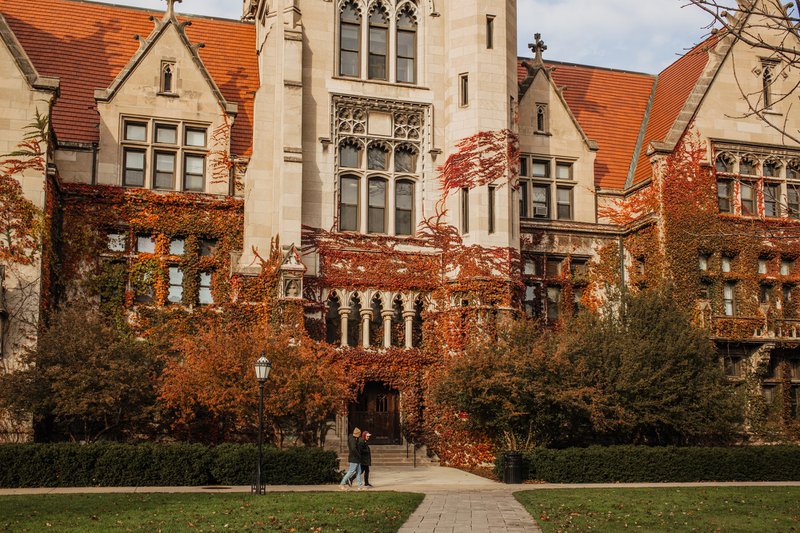
Scholarships and Grants
When it comes to paying for college, scholarships and grants are essential tools that can make higher education more affordable. Unlike student loans, scholarships and grants for college don’t require repayment, making them the most sought-after form of financial aid. But what’s the real difference between the two? In simple terms, scholarships are typically awarded based on merit, such as academic achievement, athletic ability, or a particular talent. Grants are usually need-based and awarded according to your family’s financial situation.
If you’re aiming for a debt-free education, you need to know how scholarships and grants work and how to get them. While they’re not always easy to find, getting money for college isn’t impossible. You just need to know where to find scholarships and grants, how to apply, and how to make your application stand out.
This guide covers everything you need to know about getting scholarships and grants for college. Here’s what we’ll cover:
- Proven strategies to find scholarships and grants that match your background, goals, and interests
- Guidance on where to find scholarships and grants and how to tap into scholarship resources in your community, school, and network
- The most trusted scholarship websites and tools — including the power of Scholarship America
- Types of scholarships and grants, including university scholarships, scholarships without essays, and full ride scholarships
- A list of grants and scholarships for high school seniors, including top scholarships like the Gates Millennium Scholarship and Coca-Cola Scholarship Program
- Step-by-step guidance on how to apply for scholarships and grants for college, and more!
By the end, you’ll be equipped with everything you need to confidently go after scholarships and grants and reduce (or eliminate!) your need for student loans.
Understanding Scholarships vs. Grants
At first glance, scholarships and grants may seem interchangeable, but they serve slightly different purposes and are awarded based on distinct criteria.
Scholarships are most commonly merit-based, which means they’re awarded based on your personal achievements. These can include academic excellence, athletic performance, artistic talent, leadership qualities, or even unique hobbies and interests. Many scholarship opportunities will require you to demonstrate these accomplishments through essays, transcripts, portfolios, interviews, or special projects.
On the other hand, grants are typically awarded based on financial need. To qualify, you must often submit financial documents through forms like the FAFSA (Free Application for Federal Student Aid) or the CSS Profile. These help institutions and organizations assess your eligibility for need-based aid.
However, the line between scholarships and grants isn’t always clear-cut. Some scholarship opportunities combine merit and financial need. For example, a student might need to meet a certain GPA threshold and demonstrate financial need to qualify. This hybrid approach is particularly common with government scholarships and university scholarships.
Additionally, some scholarship opportunities prioritize specific populations. This includes first-generation college students, underrepresented communities, or students pursuing particular fields of study. Understanding your qualifications and financial profile is key to uncovering the most relevant scholarships and grants for your situation.
Knowing the difference — and the overlap — between scholarships and grants for college allows you to cast a wider net and apply to more opportunities. Whether you’re seeking scholarships without essays for a quick win, or diving into applications for full ride scholarships, understanding what type of aid you’re applying for will help you maximize your chances of success.
Do you have to pay back scholarships and grants?

One of the biggest advantages of scholarships and grants is that they do not have to be paid back. This is true for both need- and merit-based scholarships and grants for college, which all qualify as forms of “gift aid.” On the other end of the financial aid spectrum are student loans. Students must repay loans in full, with interest, and can often become a financial burden after graduation.
That said, there are conditions you must meet to maintain certain awards. Some scholarships and grants come with specific requirements, such as maintaining a minimum GPA, completing a set number of credit hours, or staying in a specific program of study. If you fail to meet those terms or withdraw from your school, you may need to repay all or part of the award.
This is especially true for university scholarships that are tied to your academic progress or enrollment status. Likewise, a government scholarship may have specific rules you must follow to remain eligible.
So, while scholarships and grants for college are typically free money, always read the fine print. Make sure you fully understand the terms and responsibilities tied to each award. Taking the time to do so can help you avoid unwanted surprises and keep your funding secure throughout your academic journey.
Finding Scholarships and Grants for College
Understanding where to find scholarships and grants for college is key to minimizing student debt and making your education more affordable. Here are a few scholarship resources to utilize during your search:
Resources for Finding Scholarships and Grants

Use your school’s resources.
Tap into your school’s guidance office — they often have access to unadvertised local and regional scholarship resources. You can also contact college financial aid offices to learn more about university scholarships.
Utilize online search tools.
Online tools and platforms play a huge role in simplifying where to find scholarships. Trusted scholarship websites like CollegeBoard’s Big Future, Fastweb, Cappex, and Scholarship America can connect you with thousands of available awards. Many of these platforms have you create an account so they can match you with scholarship opportunities that fit your unique profile.
Look to your community for possible scholarships.
When deciding where to find scholarships and grants for college, don’t forget to search within your community. Civic groups, religious organizations, local businesses, and even your parents’ employers may offer a list of scholarships that go under the radar. These are often less competitive and can really add up. Also, explore federal, state, local, private, and school-specific scholarships and grants for college. Cast a wide net so you don’t leave any money on the table.
Finding the right mix of scholarships and grants for college may take some time, but every hour you invest in the search could save you thousands down the road.
Pro Tip: Make a spreadsheet to track deadlines, requirements, and award amounts. The more organized you are, the more efficient your application process will be.
Now that you have an idea about where to find scholarships, let’s talk about how to find the best scholarship opportunities for you.
How do I find scholarships for me?
Winning scholarships is all about understanding what you bring to the table. To find scholarships that truly fit, start by reflecting on your personal strengths and characteristics. Many scholarship opportunities are designed for students with specific attributes, goals, or life experiences — use this to your advantage.
Consider these filters when building your list of scholarships:
Filters to help find your best scholarships

Academic performance
Some scholarships target students with high GPAs or strong standardized test scores. For example, the National Merit Scholarship Program qualifies students based on PSAT scores. Many colleges also offer academic merit awards to students with GPAs above a certain threshold.
Intended college major or career path
If you know your intended major or what you want to do after graduation, search for scholarships geared toward those fields. For instance, STEM students might explore the SMART Scholarship from the Department of Defense, while aspiring educators could apply for the TEACH Grant.
Hobbies, talents, or extracurricular activities
Are you a musician, athlete, or chess enthusiast? Scholarships exist for everything from esports to equestrian riding. Students involved in theater or art can find creative arts scholarships, while debate team members might qualify for speech and leadership scholarships.
Identity and background
Scholarships exist to support underrepresented groups. This includes BIPOC (Black, Indigenous, and People of Color) students, LGBTQ+ students, first-generation college students, students with disabilities, and more. The Hispanic Scholarship Fund (HSF) and United Negro College Fund (UNCF) are two examples of organizations offering identity-based aid.
Volunteer work and leadership experience
Leadership scholarships often look for students who’ve held positions like student council president, club officer, or team captain. Others reward a demonstrated commitment to service. The Prudential Spirit of Community Awards, for example, recognize students with a strong history of volunteering.
Financial need or unique life experiences
Many scholarships focus on helping students with limited financial resources or those who’ve overcome personal challenges. The Horatio Alger Association, for instance, offers scholarships to students who have faced and overcome adversity.
There are even scholarships for students who are left-handed, vegan, or passionate about video games! The key is to create a tailored list of opportunities based on who you are and what differentiates you from other future college students.
Scholarship Websites
Navigating the world of scholarships is far easier — and more effective — when you leverage the right scholarship resources. Trusted scholarship websites can save you hours of research by connecting you directly with scholarships and grants for college that align with your academic background, financial need, interests, and future goals. Whether you’re looking for scholarships for high school seniors, university scholarships, or full ride scholarships, these platforms are essential tools for maximizing your financial aid potential.
Here are some of the most reliable, high-impact scholarship platforms to help you get started:
5 Helpful Scholarship Websites

1. Fastweb
- One of the largest and most established scholarship databases, used by millions of students nationwide.
- Features include advanced search filters, automatic deadline alerts, and personalized matches.
- Excellent for building a custom list of scholarships based on your academic profile and interests.
2. Bold.org
- Offers exclusive, constantly updated scholarship opportunities, including popular scholarships without essays and niche awards.
- Known for its sleek user interface and quick-apply feature that simplifies the application process.
- A standout for students seeking unique scholarships and fast access to funding.
3. College Board’s BigFuture
- Integrates seamlessly with the CollegeBoard platform used for SAT and AP testing.
- Helps you find scholarships tied to your college list, major, or extracurricular involvement.
- Strong for accessing university scholarships and institutional aid through one centralized hub.
4. Cappex
- A powerful scholarship search engine with in-depth profiles on awards, colleges, and student reviews.
- Helps you compare scholarship opportunities side-by-side and see eligibility in real time.
- Great for students who want both college admissions insight and financial aid tools in one place.
5. Scholarship America
- Scholarship America is a nonprofit organization committed to equitable access to higher education.
- Partners with major corporations and foundations to offer high-value, merit-based, and need-based scholarships.
- Students from underserved backgrounds or those seeking mission-driven scholarship funding will find Scholarship America particularly helpful.
While scholarship websites like Scholarship America and Bold.org offer valuable information, it’s easy to feel overwhelmed by the sheer amount of scholarship opportunities out there. Use these tips to maximize your online scholarship search:
Tips to Maximize Your Online Scholarship Search

Add relevant details to your profile: Input your GPA, intended major, test scores, interests, and demographic details to receive the most accurate matches.
Use strategic filters: Narrow your search by award amount, eligibility, essay requirements, deadline urgency, or application complexity.
Create a master list: Use a spreadsheet or digital tracker to log key details like due dates, award values, application components, and submission status.
Set notifications and reminders: Stay ahead of deadlines and avoid missing out on competitive scholarships with calendar alerts.
Apply early and often: Many scholarships are offered year-round. Applying consistently increases your chances of winning more than one award.
Whether you aim to reduce student debt, win multiple scholarship offers, or land a full ride scholarship, start with these tools — and stay persistent. Your college dreams are worth the effort.
What is the best website to apply for scholarships?
The “best” scholarship website ultimately depends on your individual goals, academic background, and the types of scholarships and grants you’re targeting. Each platform offers unique advantages, so it’s important to align your search strategy with what matters most to you, whether it’s award size, application style, or credibility. Here’s how to choose the right scholarship resources based on your needs:
- If you’re looking for a broad mix of big and small scholarships, try Fastweb or Bold.org.
- For students with strong academics or niche interests, CollegeBoard and Cappex offer tailored opportunities.
- Want reliable, no-cost access to verified awards? U.S. News and Scholarship America provide updated listings that are free and trustworthy.
3 Key Features of Good Scholarship Websites

1. Free Access
Legitimate scholarships will never ask you to pay upfront fees. Be cautious of websites or organizations that ask for money in exchange for scholarship listings or application submissions, as these are often scams.
2. Up-to-Date Listings
Ensure the scholarship platform consistently provides current and accurate information. Scholarship deadlines, eligibility criteria, and available amounts can change frequently, so it’s essential to use platforms that regularly update their listings. This will save you time and effort, ensuring you apply to relevant and active scholarships.
3. Secure Application Portals or Direct Links to Official Sites
Always prioritize platforms that offer secure application portals. Look for websites with HTTPS in their URL, which ensures data encryption and privacy. Alternatively, platforms that provide direct links to the official websites of scholarship providers are also a reliable option. These official websites will have the most up-to-date and accurate application information, and they often include important details regarding the scholarship’s terms, eligibility, and application process.
Additionally, remember to regularly check the official websites of the colleges you’re considering. Many universities offer internal scholarships that you can apply for through their admissions process. These scholarships may look at academic achievement, extracurricular involvement, financial need, or other criteria, and they often provide significant funding for your education. By staying on top of both external and internal scholarship opportunities, you can maximize your chances of receiving financial aid and reduce the burden of tuition costs.
How do I find grants for college?
While scholarships often require proactive searching, you can access many grants for college simply by applying for financial aid.
There are three major types of grants you can qualify for. Offered by the U.S. government, federal grants are for students with demonstrated financial need. The most common federal grant is the Pell Grant; students receive this award based on their family’s financial status.
The second major type of grant is state grants. States generally reserve these grants for eligible residents attending in-state schools. Each state has its own set of rules and programs, making it important to check your state’s education website to find scholarships and grants tailored to your area.
And, finally, there are institutional grants. Many colleges and universities offer university scholarships and grants based on financial need, academic performance, or other factors. Awarded by individual colleges, these institutional grants often play a significant role in your total aid package.
3 Steps for Federal, State, and Institutional Grants

1. Complete the FAFSA.
This is the first step in applying for all federal aid, including Pell Grants and other federal funding. Completing the FAFSA will also connect you to state and university scholarships that may be available.
2. Submit the CSS Profile.
Some private colleges require the CSS Profile to assess eligibility for their institutional scholarships. This additional financial document helps colleges determine your eligibility for non-federal financial aid.
3. Visit Your state’s education website.
Each state has its own grant programs. By researching state-specific scholarships and grants, you can uncover more opportunities for financial support. Check out the list of scholarships available in your state and see if you qualify.
By completing these applications, you’ll also gain access to automatic scholarship and grant opportunities based on your financial profile, ensuring you’re making the most of your scholarship opportunities. Next, let’s talk about the FAFSA and federal grants in more detail.
Federal grants and FAFSA
Filing the FAFSA (Free Application for Federal Student Aid) is one of the most crucial steps in securing both grants and scholarships for college. Completing the FAFSA unlocks access to a variety of federal aid programs, which can significantly reduce the financial burden of higher education. There are two common federal grants available: the Pell Grant and Federal Supplemental Educational Opportunity Grant (FSEOG).
The Pell Grant is awarded to undergraduate students who demonstrate exceptional financial need. For the 2024-2025 academic year, the maximum award is over $7,000, providing substantial support for students who qualify.
The Federal Supplemental Educational Opportunity Grant provides additional financial aid to students with high need, depending on the participating school’s funding levels and availability. Schools with limited funds may award this grant to the students who demonstrate the greatest need.
These grants are awarded based on your Expected Family Contribution (EFC), or its updated version, the Student Aid Index (SAI). Essentially, the lower your EFC or SAI, the higher your eligibility for aid. This means students with greater financial need are more likely to receive these funds.
Because some federal funds, including the Pell Grant and FSEOG, are limited, it’s important to submit your FAFSA as early as possible each year — ideally, as soon as it opens in the fall. Early submission increases your chances of receiving the maximum amount of aid available, as many federal and state programs operate on a first-come, first-served basis. Don’t miss out on these valuable opportunities to lower the cost of your education.
Applying for school-specific grants
Many schools offer school-specific scholarships for high school seniors on their way to college. This is usually the main form of financial assistance for most families. For students looking to apply for school-specific scholarships and grants, it’s important to understand the requirements for university scholarships.
Schools can offer two kinds of scholarships: merit and need-based. Generally, merit scholarships are based on your admissions application, while need-based scholarships are based on financial need. Some students will get a combination of both — however, in general, schools offer more need-based aid than merit aid.
Reaching out to a school’s financial aid office is a great way to learn more about what kind of scholarships and grants it offers. Additionally, many schools have their own list of scholarships on their financial aid website.
Qualifying for institutional aid
Most need-based scholarships and grants for college require students to file the FAFSA and CSS Profile. Make sure you submit your applications by the financial aid deadline (which generally mirrors your admissions deadline). Students who apply after the financial aid deadline may not receive any institutional aid, so be sure to check each school’s financial aid website for its official deadlines. And remember, don’t procrastinate on applying!
When applying for school-specific scholarships and grants, you’ll want to understand how they factor into your overall award. UC Davis, Northwestern, and Brown have example financial aid packages on their websites, making it easier to see how school-specific scholarships and grants factor into your financial aid package. You can also use a Net Price Calculator to estimate the amount of grant you could qualify for. Each school will have a Net Price Calculator on their financial aid website — be sure to use at least one as you plan your applications.
List of Scholarships and Grants
When researching scholarships and grants for college, you’ll need to research specific scholarship opportunities. To help you get started, we’ve compiled a list of scholarships below, ranging from full-ride scholarships to federally funded government scholarship programs.
Here is our list of scholarships, broken down by scholarship type:
Full Ride Scholarships

QuestBridge National College Match Scholarship
QuestBridge is a highly prestigious scholarship program for high-achieving, low-income students. It offers a full four-year scholarship, along with access to a strong alumni network and valuable career development resources. Through its National College Match program, students will match with a partner college—eliminating the need for additional applications.
Coolidge Scholarship
This scholarship offers a full-ride scholarship that can be used at any accredited college in the United States. The Coolidge Scholarship is solely merit-based, meaning students from all backgrounds can apply. This application is only open to juniors, so if you are looking for scholarships for high school seniors, you can leave this one off your list.
Jack Kent Cooke College Scholarship Program
Known as a “last-dollar scholarship” program, the Jack Kent Cooke College Scholarship Program covers any remaining expenses that federal and school grants and scholarships don’t cover. To apply, students must demonstrate financial need and have a minimum 3.75 GPA.
Project or Essay-Based Grants and Scholarships

Breakthrough Junior Challenge
The Breakthrough Junior Challenge is a science video competition that awards a $250,000 scholarship as its top prize. The application process is a bit more extensive when compared to other scholarships — students must complete a peer review of other submissions to qualify.
Headbang For Science Scholarship
The Headbang for Science Scholarship is for high school seniors who identify as a “metalhead” and want to pursue a career in healthcare or physical sciences. Winners receive $11,000 to use for college.
ABA Academic Merit Scholarship
The American Bus Association offers a number of academic scholarships to those pursuing degrees in tourism, transportation, travel or other related fields. Winners of this academic merit scholarship are awarded $5,000 to put toward their studies. If you’re still in high school, keep this scholarship in your back pocket — this scholarship is only available to current college students who have already declared their major.
Government-Sponsored Grants and Scholarships

Pell Grant
The Pell Grant is a federally funded grant awarded to low-income families who file the FAFSA. Your FAFSA determines your eligibility for the Pell Grant. Pell Grants are open to all U.S. citizens who meet the income requirements and can be used at any accredited college in the United States.
Cal Grant
The Cal Grant is a need-based grant for California residents studying at an in-state public college. This includes schools in the UC and CSU systems, as well as qualifying community colleges and trade schools. Students can get the Cal Grant by filing the FAFSA or CA Dream Act Application.
USDA 1890 National Scholars Program
The USDA 1890 National Scholars Program offers scholarships to students from rural communities planning to study agriculture, food science, or other related fields. The program partners with 19 colleges and universities across the country.
School-Specific Scholarships

Morehead-Cain Scholarship (UNC)
The Morehead-Cain Scholarship program at UNC provides full funding for four years (and four summers) of study at UNC. Students are also provided with mentors, networking opportunities, and additional academic support.
Odyssey Scholarship Program (UChicago)
The Odyssey Scholarship program is designed for low-income UChicago students. In addition to having 100% of their financial need covered, Odyssey students will also receive funding for study abroad, internships, and academic research.
Trustee/Presidential Scholarships (USC)
USC has several merit scholarships, including the full-tuition Trustee Scholarship and the half-tuition Presidential Scholarship. Students must apply by December 1st to be considered for these merit scholarships.
Keep in mind that scholarships are posted to search engines throughout the year, so it’s a good idea to keep checking to see if any new ones have been added. Starting your search early can help you plan out which scholarships you’ll apply to and ensure you have plenty of time to complete each application.
What are the most competitive scholarships?
Logically, the most competitive scholarships and grants for college are the programs that offer significant amounts of money. Full ride scholarships are often highly selective and competitive. Programs like QuestBridge, the National Merit Scholarship Program, and the Goldwater Scholarship are all highly competitive.
Additionally, the most competitive scholarships will have the most intensive application processes, as well as early deadlines. Some of the most competitive scholarships have deadlines in early fall, so it’s important to be prepared. Many will require multiple essays, letters of recommendation, and polished resumes. There might be multiple rounds of interviews, so it’s important to prepare over the summer before you apply.
Applying for these super competitive scholarships can greatly help your college application process, too. With such early deadlines, many students need to have their application materials ready far sooner than the college admissions process requires.
If you find yourself leaning towards scholarships without essays, keep in mind that the best scholarships usually take a bit of work. If you want to maximize your odds of earning scholarships and grants for college, balance your list with a mix of more involved and easy-apply opportunities.
In the following section, we’re going to review two of the most competitive scholarship opportunities: the Coca-Cola Scholarship and the Gates Scholarship. We’ll provide some in-depth details about each scholarship, including the application process and tips to help you stand out.
Coca-Cola Scholarship
The Coca-Cola Scholarship is a highly prestigious, merit-based scholarship. Winners receive a $20,000 scholarship to use at any accredited 4-year college in the United States. The scholarship is open to current high school seniors who are eligible to file a FAFSA and have at least a 3.0 GPA.
Of all the scholarships for high school seniors, the Coca-Cola Scholarship is one of the most popular. To apply, all you have to do is fill out an online application — no essays, transcripts, or recommendation letters are needed. However, if selected as a semifinalist, you’ll need to submit several essays, your official transcript, and a formal recommendation. From there, the scholarship committee selects regional finalists who are invited to participate in an interview. As such, you should prepare for the semifinalist round before you are selected. Having more time to work on your essays and application materials will ensure your best work is submitted.
If you’re interested in applying for the Coca-Cola Scholarship, you can read more about the process in our guide: How to Win the Coca-Cola Scholarship.
Gates Scholarship

The Gates Scholarship is a highly competitive, full-ride scholarship open to high achieving, low-income students. The Gates Scholarship is different from other scholarships and grants, as it is a “last-dollar” scholarship. A “last-dollar” scholarship will cover any remaining expenses you have after all other sources of aid are applied.
This means that the total Gates Scholarship amount you receive will depend on your other sources of aid, including federal aid and school-based scholarships and grants. For example, if your school costs $50,000 per year and you receive $30,000 per year in financial aid from your school, the Gates Scholarship will cover the remaining $20,000 per year.
To be eligible to apply, students must be a senior in high school, Pell eligible, and from an underrepresented background. When applying, students will need to submit their Student Aid Report (SAR) from the FAFSA, a letter of recommendation, their resume, and a headshot. Students are then selected as finalists and are invited to interview.
If you’re interested in applying for the Gates Scholarship, you can read more about the application process in our guide: How to Win the Gates Scholarship.
How to apply for scholarships and grants
Applying to scholarships and grants for college can be just as stressful as the college application process. With so many applications to keep track of, it can feel overwhelming to even start. However, applying for scholarships and grants is a crucial part of paying for college, so it’s well worth the effort.
Build your scholarship list.
Give yourself plenty of time to find and narrow down the scholarships on your list. Bookmark your favorite scholarship websites and other scholarship resources and check them regularly. Scholarships and grants for college are posted throughout the academic year, so it’s important to keep checking your scholarship websites as they’ll be continuously updated.
To find easy scholarships and grants that you have a higher chance of winning, try searching for lesser known scholarships based on your hobbies or interests, such as the Jack Kent Cooke Young Artist Award. Finding university scholarships tailored to your personal interests will help narrow down the competition, increasing your chances of success.
Gather application materials.
Once you’ve built your list, start crafting your application materials. Many scholarship opportunities require a resume, letter of recommendation, and at least one essay, so be sure to plan accordingly! That means asking for letters of recommendation at least four weeks in advance and letting a trusted teacher, peer, or mentor look over your application essays. Tailoring your resume and essays for each scholarship and grant will also help your applications stand out.
When crafting your application, do some research into the mission and goals of the scholarship program. This will give you an idea of exactly what they’re looking for in an applicant. If they’re focused on certain values, like leadership or community service for instance, speak to those values in your application essay. If applications ask about your plans for the future, clearly articulate your goals for college and beyond.
Securing scholarships and grants for college starts with one key step: knowing where to find scholarships. It might take some digging to find opportunities that truly match your background and goals — but the better the fit, the better your chances of winning. The good news? Many scholarships for high school seniors require the same kinds of materials as college applications. So rather than feeling like extra work, applying for scholarships can help you feel more confident applying to colleges.
What scholarships are easy to get?

While there are plenty of “easy” scholarships and grants available, they typically have less payoff than the more competitive scholarship opportunities. It’s a good idea to apply to a mix of scholarships, using large scholarship websites, like Scholarship America, as well as more niche scholarship resources.
Local scholarships and grants for college
It can be helpful to look up “scholarships and grants near me” when you’re first starting your search. Many local scholarships and grants for college are less competitive than national scholarship opportunities, as the applicant pool is often smaller. Ask if your school offers scholarship opportunities for their students, or where to find scholarships locally. Your school guidance counselor can help you find scholarships that only local students have access to.
Scholarships without essays
You can also search “scholarships without essays” to find scholarships and grants that you can quickly apply to, such as the Sallie Mae No Essay Scholarship. While searching “scholarships without essays” may help you find quick and easy applications, actually winning these types of awards can be challenging. Since scholarships without essays have streamlined applications, these types of scholarship opportunities attract hundreds, if not thousands, of students.
Need-based scholarships and grants
In addition to outside scholarships and grants, it’s important to formally apply for financial aid and university scholarships directly through your school or college. It’s likely that most of your financial aid will be in the form of university scholarships, so it’s important to meet all financial aid deadlines. Find the list of scholarships available at your college, and review the application requirements.
Overall, finding easy scholarships and grants can be a great way to supplement your financial aid. While the easiest university scholarships may come with a lot of competition, finding local scholarship resources and scholarship opportunities tailored to your personal interests can help you secure additional funding.
How do I win scholarships and grants?
Applying to scholarships and grants is one thing, but actually winning them is another. When it comes to winning scholarships and grants for college, it can be hard to balance the application process with applying to college. We’ve compiled some tips to help you find scholarships and increase your chances of winning them.
5 Tips to Win Scholarships and Grants

1. Start the search early
Knowing where to find scholarships is the first step — using trusted sources and scholarship websites is key. You can start researching university scholarships and grants early, even before junior year. Many students don’t know how to find scholarships until they’ve already been admitted to college, which is oftentimes too late.
Make a list of scholarships and grants you plan to apply to. Keep track of their deadlines and application requirements, and be prepared to ask for additional letters of recommendation. Know where to find scholarships local to your area, and utilize any scholarship resources provided by your school.
2. Stay organized
Balancing applying to university scholarships with the college application process can be challenging. Staying organized is key to ensuring you’re applying to as many scholarships and grants for college as possible. Knowing where to find scholarships and staying on top of the application process will help you find scholarships quickly and effectively.
Keep a scholarship tracker and create a bank of essay responses that will allow you to quickly tailor your application. Find scholarships for high school seniors through your guidance office, or other scholarship resources, like Scholarship America. Plan to spend 1-2 hours weekly on the scholarship search and application process, and keep track of all the scholarships you apply for. Staying organized and consistent will help you stay on track!
3. Showcase your best self
Before your senior year begins, take stock of all your accomplishments and achievements. This can help you find university scholarships that are tailored to your experiences. Start drafting essay responses that help highlight your achievements early. In some cases, you can reuse your college application essays, just be sure to tailor your essays to each scholarship application.
Make sure you polish your resume as well, having your greatest accomplishments front and center. And don’t be afraid to show off what you’ve done — that’s the point after all! Seek help from your guidance counselor or school career center if needed.
4. Balance quality with quantity
Applying to scholarships and grants for college can feel like a bit of a numbers game. While applying to many different scholarships can help increase your chances of winning additional money, it’s easy to let the quality of your applications slip. Therefore, it’s important to find a balance between the two.
5. Don’t stop applying!
New scholarships open every month, so it’s important to consistently look through scholarship websites for additional scholarship opportunities. If you haven’t won any scholarships yet, don’t get discouraged — keep the search going through the summer.
And remember, the search for scholarships doesn’t stop after you graduate high school. Students can apply to scholarships throughout their four years of college. In fact, there are scholarships you won’t be eligible for until your sophomore or junior year! See if you can find scholarships specific to your major or your future career. Be sure to keep in contact with your school’s financial aid office as well, and ask if they have any additional scholarships you can apply for.
How to Win Scholarships and Grants- Final Takeaways
Winning scholarships and grants can help ease the financial burden of college for you and your family, but the application process can be tricky to navigate. Knowing where to find scholarships, keeping track of your applications, and working with financial aid offices can make the college application process even more stressful. However, securing scholarships is necessary and beneficial for most students.
Scholarships and grants do not need to be paid back, and most schools will offer grants and scholarships directly to students who apply for financial aid. Federal grants and scholarships can help bridge the gap, and outside scholarships can help with additional expenses.
It’s never too early to start looking for scholarships and grants for college, especially if you plan on applying to highly competitive scholarships. If you’re wondering where to find scholarships, scholarship websites such as Scholarship America can help you find scholarships targeted towards your personal interests and accomplishments. Be sure to consider local, state, and federal government scholarships and grants, as well as private and institutional scholarships.
Use the summer before your senior year to prep your essays, polish your resume, and secure your letters of recommendation. This way, you can hit the ground running in the fall of your senior year. Staying organized with your scholarship applications and tailoring your essays and resume can help increase your chances of winning.
If you’re still struggling with where to find scholarships, CollegeAdvisor is here to help. Our expert advisors are here to guide you through every step of the scholarship process — from completing the FAFSA and CSS Profile to tackling even the most competitive scholarship applications. Be sure to schedule your free consultation today!

This article was written by Ashley Hollins and Jessica Klein. Looking for more admissions support? Click here to schedule a free meeting with one of our Admissions Specialists. During your meeting, our team will discuss your profile and help you find targeted ways to increase your admissions odds at top schools. We’ll also answer any questions and discuss how CollegeAdvisor.com can support you in the college application process.
